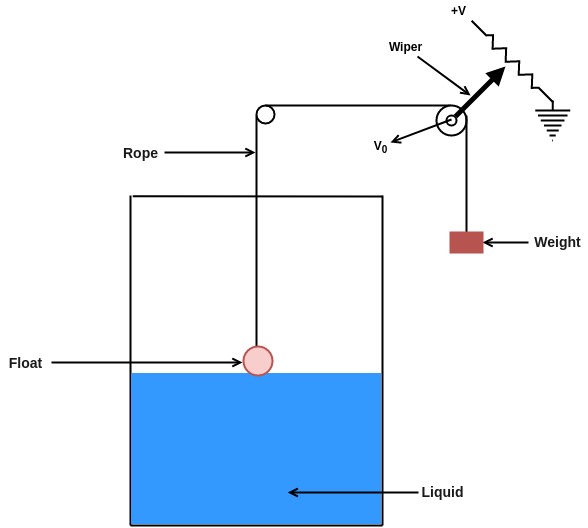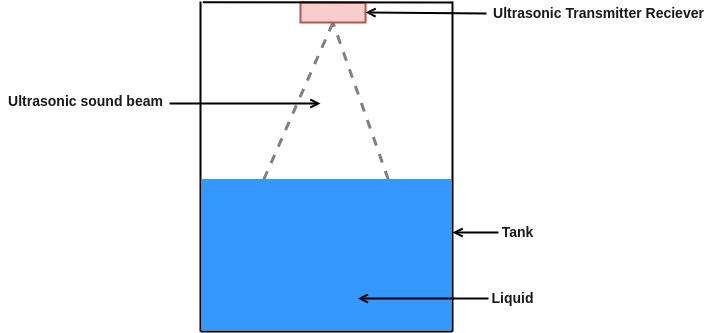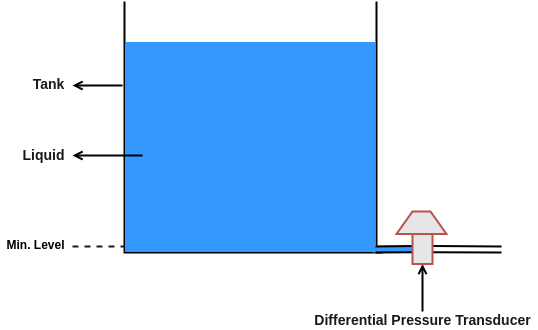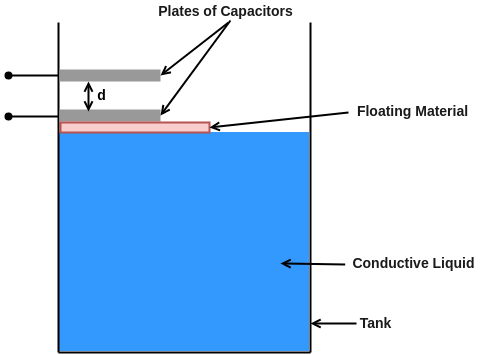A level transducer is a device that produces an electric signal with respect to a liquid level.
Level transducers are classified based on following measurement methods
- Direct and indirect level measurements.
- Continuous and discrete level measurements.
In direct method of measurement, the liquid level is converted directly to electrical signal. This can be done with the help of some indicators. In indirect method, liquid level is first converted to displacement and this displacement is then converted to electrical signal.
Continuous Level Transducer
Continuous level transducers measure the exact position of liquid level. It can monitor the entire system. Different types of continuous level transducers are
- Ultrasonic level transducers
- Float element type-level transducers
- Capacitive level transducers
- Pressure type-level transducers
- Inductive level transducers
- Resistive level transducers etc.
Float Element Type Level Transducers
A float element type liquid level transducer is the most common simple method to measure liquid levels.

As the liquid level rises in the tank, the float rises. It causes to move the wiper over the potential divider. The output terminals of the potential divider are connected to a voltmeter. The output voltage is increased as the float rises. That is the voltage will be proportional to the liquid level.
Advantages
- Simple in construction.
- Easy to operate.
- Works at large temperature range.
Disadvantages
- Not suitable in moderate pressure.
- Design of float should be selected properly.
Ultrasonic Level Transducers
The ultrasonic level transducers work by the time-of-flight principle. It is a method used for measuring the distance between a sensor and an object.

The ultrasonic transmitter emits an ultrasonic pulse beam towards the liquid. This pulse is reflected back to the ultrasonic receiver by the liquid surface. The time difference between the transmission and reception is measured and is calibrated to distance.
It can be used for both continuous and discrete level measurements.
Advantages
- Reliable.
- There are no moving parts.
- Can be used in high humidity.
- Material density or conductivity is not affected.
Disadvantages
- Dust particle may create distortion.
- Vibration or high noise will affect result.
Manometer Type Level Transducers

Pressure Type Level Transducers

Capacitive Level Transducers
Capacitive transducers can also be used to measure liquid levels.
Measurement of non-conductive material

The two concentric cylinders act as electrodes and the non-conducting liquid act as the dielectric medium.
Non contacting Measurement

One plate is kept fixed as other plate moves with the liquid level.
Point (Discrete) Level Transducer
Discrete level transducers are used to detect a single discrete liquid height. It is normally used for detecting overflow or below the required level conditions.

